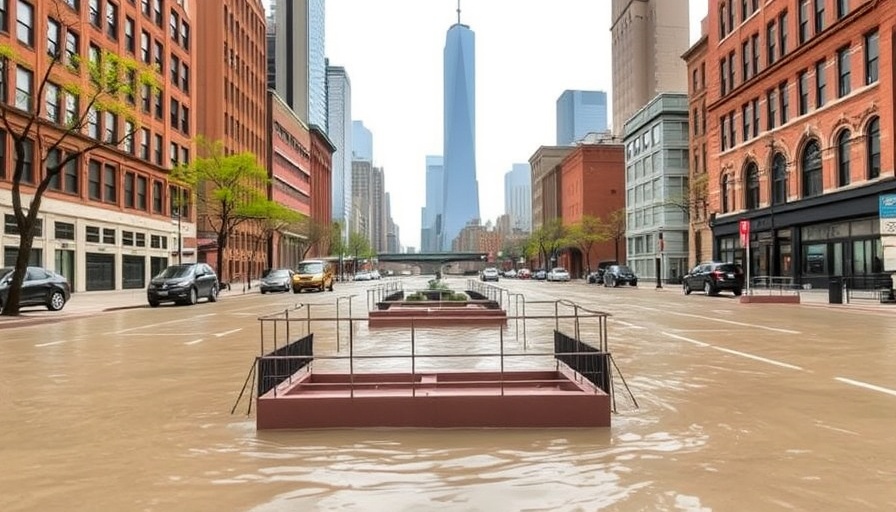
A Bold Move: NYC’s $1.7B Flood Prevention Investment
New York City is stepping up its battle against climate change and flooding with a substantial $1.7 billion investment aimed at reducing flood risk. This initiative comes in response to a series of extreme weather events, notably Hurricane Sandy in 2012, which caused catastrophic street flooding and infrastructure damage. NYC’s journey toward enhanced flood resilience reflects a growing recognition among urban planners and policymakers of how climate change poses a direct threat to urban populations.
The Scope of the Initiative
The massive funding will support a variety of projects focused on strengthening the city's flood defenses. Included in the plan are the construction of new flood walls, improvements to existing drainage systems, and the integration of green infrastructure such as parks and wetlands designed to naturally manage stormwater. These projects not only help to mitigate flooding but also enhance the overall urban environment.
Historical Context of Urban Flooding
Historically, New York has grappled with flooding issues, particularly in low-lying areas. Major storms have unveiled vulnerabilities in the city’s infrastructure—a reality starkly highlighted by Hurricane Sandy’s impact. The flooding displaced thousands and caused billions in damage, prompting a citywide reassessment of flood management strategies. This new investment signals a shift towards proactive, rather than reactive, planning.
The Role of Technology in Flood Management
As NYC embarks on this ambitious project, technology will play a pivotal role. Advanced forecasting models and smart sensors will be used to monitor rain levels and water flow, allowing the city to respond rapidly to emerging flood threats. Additionally, flood mapping tools will help planners identify the most vulnerable areas, ensuring that resources are directed where they are most needed.
Community Impact and Involvement
Local communities will be directly affected by these changes, both positively and negatively. While the intention is to protect residents from flooding, the construction phase may lead to temporary disruptions. Engaging with community members to keep them informed about the benefits and timelines of these projects will be crucial in maintaining public support and transparency.
Trends in Urban Flood Resilience
The NYC initiative mirrors a broader trend in urban planning, where cities across the globe are investing in climate resilience. Cities like Miami and New Orleans are also enhancing their flood defenses as they face similar vulnerabilities. The crucial takeaway is that addressing climate change requires collaborative efforts; municipal investments should be coupled with federal support and private partnerships to create robust solutions.
Potential Challenges Ahead
While the funding is a significant step forward, the initiative is not without its challenges. Delays in project implementation, rising costs, and political obstacles pose potential risks. Additionally, the effectiveness of these flood defense systems will be tested as extreme weather patterns become more frequent. Ongoing assessments will be necessary to ensure that the measures are adaptive and effective in the long run.
Actionable Insights: What Homeowners Should Know
This investment carries implications for homeowners across the city. Understanding the flood risks in your neighborhood and staying informed about city plans can empower residents to take proactive measures to protect their homes. Building resilience might include implementing personal flood-proofing strategies, such as elevating basements or installing sump pumps. Engaging with local contractors on best practices for flood preparedness can enhance your home’s resilience.
Call to Action: Stay Informed and Prepare
As NYC embarks on this essential project, it’s vital for residents to remain informed about upcoming changes and potential impacts on their neighborhoods. Engage with local community boards and city meetings to voice concerns and stay updated on progress. This proactive role ensures that the community's needs are addressed and that homeowners are equipped to manage risks effectively.
 Add Row
Add Row  Add
Add 




Write A Comment